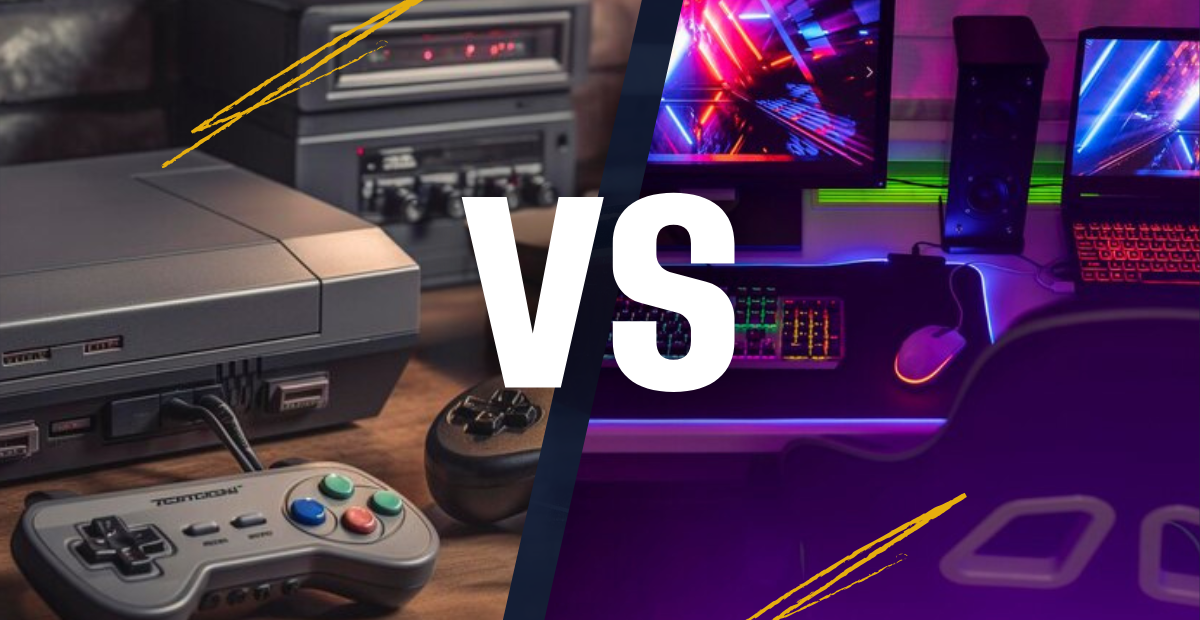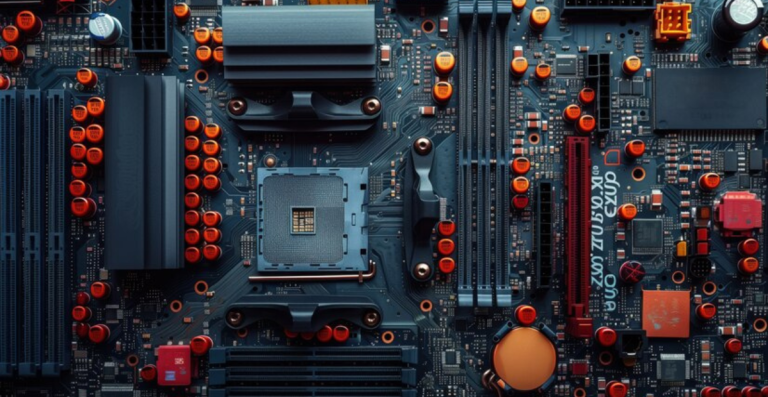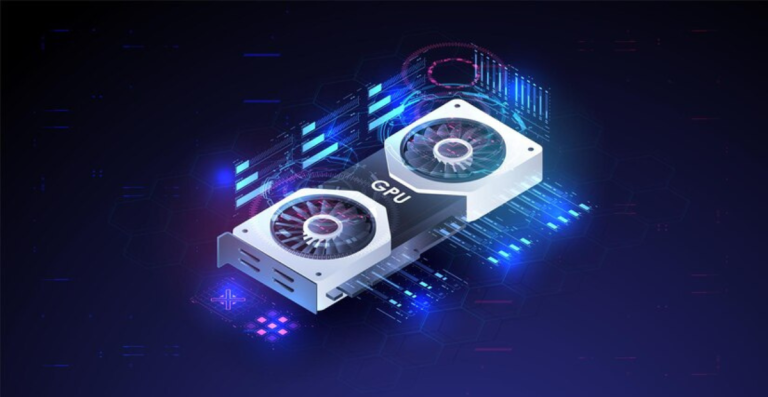Are Consoles Better Than Computers? A Comprehensive Comparison for Gamers in 2025

Gamers are faced with a choice between gaming consoles and personal computers always, each offering unique benefits. Consoles, such as the PlayStation 6 and Xbox Series X Gen 2, are streamlined for gaming and entertainment, providing a plug-and-play experience.
Meanwhile, gaming PCs offer powerful, customizable systems that extend beyond gaming, catering to productivity and content creation. you will explore the key differences, comparing performance, cost, ease of use, and gaming experience.
Lets learn simplicity or flexibility, below comparison will help you decide which platform suits your gaming needs this year.
Understanding the Platforms
When it comes to gaming, two major platforms dominate the landscape: consoles and personal computers (PCs). Each platform offers a distinct experience and serves different needs.
Consoles are dedicated gaming devices designed primarily for playing video games. With their fixed hardware, consoles like the PlayStation 6 and Xbox Series X Gen 2 offer an optimized, consistent gaming experience.
These devices are built for ease of use and cater to gamers who want a straightforward, hassle-free experience. Consoles typically require minimal setup, making them a go-to choice for those who want to jump into gaming quickly without worrying about hardware specifications or updates.
On the other hand, PCs are versatile, multi-functional devices capable of handling more than just gaming. A gaming PC can be used for work, content creation, and entertainment in addition to playing video games.
With the ability to customize and upgrade components like the GPU, CPU, and RAM, PCs offer a high degree of flexibility and performance. However, this level of customization comes at a cost: PC gaming often requires more technical knowledge, both for setting up and maintaining the system.
By understanding the fundamentals of both platforms, we can now dive deeper into their respective strengths and weaknesses in 2025.
| Feature | Cloud Gaming Services | Display Technology | VR/AR in Gaming | Controller/Input Methods | Social Aspect of Gaming |
| Key Concept | Gaming via streaming, reducing hardware needs. | High-quality visuals and smooth gameplay. | Immersive experiences (VR) and potential interactive overlays (AR). | Interface between player and game. | Connecting and playing with others. |
| Examples (2025) | GeForce Now, Xbox Cloud Gaming, PlayStation Plus Premium | 144Hz+ monitors, HDMI 2.1 TVs, FreeSync, G-Sync | PlayStation VR 3 (speculated $400-$600), potential Valve Index 2 ($800+) | Advanced haptics/triggers on controllers, precise mouse/keyboard. | Cross-platform play, integrated community features, streaming, online multiplayer. |
| Impact on Console vs. PC | Blurs lines by offering PC-quality games on various devices. | Maximizes visual potential of both platforms. | Offers unique experiences on both, but hardware ecosystems differ. | Controller advancements bridge some gaps, but PC retains input versatility. | Enhances the overall gaming experience on both platforms. |
| Key Details/Considerations | Subscription costs ($10-$20), internet speed (25-50 Mbps+). | Resolution, refresh rate, VRR support, input lag. | Hardware requirements, game availability, maturity of AR. | Ergonomics, wireless connectivity, genre-specific advantages. | Cross-platform compatibility, online service costs (consoles). |
Dedicated Gaming Devices: The Modern Console
In 2025, gaming consoles like the PlayStation 6 and Xbox Series X Gen 2 are evolving to meet the needs of gamers. These devices are designed to be plug-and-play, meaning they offer an easy setup for those who want to dive straight into gaming without any technical hassle.
The PlayStation 6 and Xbox Series X Gen 2 come with hardware specifically optimized for gaming, ensuring smooth, consistent performance and an immersive experience. For many gamers, the simplicity of consoles and the focus on entertainment, combined with an affordable price point, makes them a top choice.
Versatile Powerhouses: The Gaming PC
Gaming PCs in 2025 are designed for more than just gaming. These machines are customizable and can handle everything from gaming to content creation and productivity. With powerful components like NVIDIA’s RTX 6000 series GPUs, AMD’s Radeon RX 8000 series CPUs, and Intel’s latest processors, users can build a system tailored to their needs.
The main advantage of a gaming PC is its upgradability gamers can continually enhance their hardware. Unlike consoles, which come with fixed hardware, a PC’s performance can improve over time, offering flexibility and longevity.
Comparing Console Gaming with PC
When it comes to gaming in 2025, the choice between consoles and PCs depends on several factors, including performance, game availability, cost, and ease of use. Consoles like the PlayStation 6 and Xbox Series X Gen 2 offer a more straightforward, plug-and-play experience.
They are designed specifically for gaming, providing an optimized environment without the need for complex setup or upgrades.
However, gaming PCs have the edge in performance. With high-end graphics cards and customizable components, PCs can offer superior resolution, refresh rates, and overall visual quality, especially for genres like first-person shooters and real-time strategy games.
While consoles tend to be more affordable upfront, gaming PCs can be a better long-term investment due to their upgradability. In terms of game availability, both platforms offer a range of titles, but PCs tend to have a broader selection, especially for indie games and mods. Ultimately, your choice depends on what you value more convenience or customization.
The Evolution of Consoles and PCs
The history of gaming consoles and PCs has been marked by remarkable advancements, each platform continuously pushing the boundaries of what’s possible in gaming. Early gaming consoles, such as the Atari 2600, laid the foundation for affordable and accessible gaming experiences.
Over time, consoles evolved to include advanced graphics, larger storage, and online capabilities, leading to today’s PlayStation 6 and Xbox Series X Gen 2, which feature impressive hardware and are fine-tuned for performance.
PCs, on the other hand, have always been the more versatile option, initially designed for productivity but quickly embraced by gamers for their superior graphics and processing power. Key moments in PC evolution include the introduction of dedicated GPUs from companies like NVIDIA and AMD, as well as the rise of solid-state drives (SSDs) and advanced cooling solutions.
Both platforms have also benefited from online services, but while PCs had online gaming earlier, consoles are now catching up with robust ecosystems. The development of both systems has been driven by the pursuit of better graphics, faster processing, and richer gaming experiences.
Performance and Graphics: The Heart of Gaming
When it comes to gaming, performance and graphics play a crucial role in your experience. Both consoles and gaming PCs deliver cutting-edge technology, but they do so in different ways. Let’s break it down:
Consoles: Seamless, Optimized, and Ready to Play
- PlayStation 6 and Xbox Series X Gen 2 are built for 4K gaming, with the ability to handle 8K resolution as the technology becomes mainstream.
- Integrated features like ray tracing give consoles impressive realism in lighting and reflections, making games look stunning even on fixed hardware.
- These consoles are optimized to deliver smooth gameplay without the need for configuration, offering a hassle-free experience for gamers who just want to pick up and play.
Gaming PCs: Customizable Powerhouses
- A gaming PC offers superior graphics, thanks to high-end GPUs like NVIDIA’s RTX 6000 series and AMD’s Radeon RX 8000 series.
- With features like DLSS (Deep Learning Super Sampling) and FidelityFX Super Resolution, PCs deliver high-quality visuals while maintaining top-tier performance.
- One of the key advantages of a PC is the ability to upgrade components like the GPU, CPU, RAM, and storage, meaning your system can stay up-to-date with the latest tech.
Comparing Performance
| Aspect | Consoles | Gaming PCs |
| Graphics | 4K, future 8K support | Superior, customizable graphics |
| Ray Tracing | Available | Advanced ray tracing with DLSS |
| Upgradeability | Fixed hardware | Can upgrade GPU, CPU, RAM |
| Ease of Use | Plug and play | Requires configuration/updates |
While consoles offer a consistent, optimized experience, gaming PCs give you the freedom to tailor your system for maximum performance, especially for enthusiasts chasing the best possible graphics and high refresh rates.
Graphics Cards and Console Graphics: Breaking Down the Visual Power
Graphics are everything in gaming, and both consoles and PCs have their own strengths when it comes to delivering stunning visuals. Let’s dive deeper into what makes the graphical experience on each platform unique.
The Power of Gaming PCs
Gaming PCs rely on dedicated graphics cards (GPUs), which are the driving force behind high-end visuals. Some of the most advanced GPUs in 2025 include:
- NVIDIA RTX 6000 Series: Known for its real-time ray tracing and DLSS (Deep Learning Super Sampling) technology, which enhances graphics without sacrificing performance.
- AMD Radeon RX 8000 Series: Competing closely with NVIDIA, AMD offers high-fidelity visuals with FidelityFX Super Resolution and incredible detail, making it a popular choice for gamers.
These GPUs enable high frame rates, better textures, and advanced visual effects, making the gaming experience feel more lifelike and immersive.
Console Graphics: Optimized for Performance
While gaming PCs have the upper hand when it comes to raw graphical power, modern consoles like the PlayStation 6 and Xbox Series X Gen 2 also impress with their built-in graphics solutions:
- Consoles come with custom-designed GPUs, optimized for specific hardware configurations. This ensures that the games perform at their best, even with fixed hardware.
- Despite being less powerful than PCs, consoles still offer stunning visuals, thanks to ray tracing, upscaled 4K graphics, and clever optimization techniques.
- Developers optimize game engines for each console, allowing them to extract maximum graphical performance from the system, creating beautiful games at a relatively lower cost than PC.
Game Fidelity and Visual Experience: What’s Better for Your Eyes?
When it comes to the visual experience, the fidelity (or level of detail) is key. Here’s a closer look at how both consoles and PCs handle the visuals in 2025:
Gaming PCs: Detail Beyond Imagination
- With top-tier graphics cards, gaming PCs can handle high-resolution textures, complex lighting, and shadow effects that push visual realism to its limits.
- The use of ray tracing and DLSS ensures smoother, more realistic lighting and reflections, making PC gaming more visually immersive and advanced.
Consoles: Punching Above Their Weight
- Even with fixed hardware, consoles optimize their graphic rendering techniques to deliver visuals that are optimized for gaming. Titles like Horizon Forbidden West and Spider-Man: Miles Morales show just how far consoles have come in terms of visual quality.
- Developers fine-tune each game for the console’s hardware, achieving beautiful graphics that balance performance and fidelity.
Key Differences in Visual Fidelity
- PCs often have superior visual detail, thanks to the ability to upgrade graphics cards and set custom options. You can tweak the game settings for higher texture quality and advanced lighting effects.
- Consoles, however, focus on optimized experiences with clever tricks like dynamic resolution scaling and upscaling to ensure games run smoothly, even if it means sacrificing some detail.
Game Libraries and Ecosystem: Which Offers the Best Experience?
When it comes to gaming, the game library and ecosystem play a huge role in determining your platform of choice. Whether you’re into massive AAA titles, indie gems, or exclusive releases, each platform offers something unique.
Exclusive Titles and Availability
One of the standout features of consoles like PlayStation and Xbox is their exclusive games. PlayStation has consistently delivered strong exclusive titles like Horizon Forbidden West, God of War Ragnarok, and Spider-Man. Xbox, too, offers its own exclusive games like Halo Infinite, Forza Horizon 5, and the Gears of War series.
These titles are often the driving force behind many gamers’ decisions to stick with a specific console. That being said, both platforms also share a wide range of third-party AAA games, making it easier for gamers to enjoy top-tier experiences on either system.
Indie Games and Mainstream Releases
Indie games have gained significant momentum over the years, and both consoles and PCs offer rich libraries of indie titles. On consoles, digital storefronts like the PlayStation Store and Xbox Store now host a growing collection of indie games.
Games like Hades and Celeste have been massive hits on both platforms. On the other hand, PCs have a more extensive library for indie games, especially through Steam, Itch.io, and Epic Games Store.
These platforms allow developers more freedom to release smaller, innovative titles that may not make it to consoles. While mainstream AAA releases are often available on both platforms, the timing of release can vary.
Mods and Community Content
One of the greatest advantages of gaming on a PC is the access to mods. Modding communities on platforms like Steam allow gamers to add new content, modify gameplay, and even create entirely new experiences.
Whether it’s adding new weapons to Skyrim, enhancing Minecraft visuals, or creating custom levels for The Witcher 3, the possibilities are virtually limitless. In comparison, consoles have limited or no mod support, which means players are confined to the content developers provide.
However, some consoles have slowly started to embrace user-generated content, especially in games like Minecraft or Fallout 4.
Backward Compatibility
When it comes to backward compatibility, PCs tend to have a significant advantage. Because of their open hardware nature, most PC games from previous generations can run on modern systems, and older games are usually available for purchase on digital storefronts.
Consoles, on the other hand, have more limited backward compatibility. While newer PlayStation and Xbox consoles have begun supporting older games, the list of supported titles is typically smaller compared to the vast library of older PC games accessible.
Game Libraries: A Quick Comparison
| Platform | Game Selection | Unique Features |
| PlayStation 6 | Exclusive single-player titles | High-quality exclusives (e.g., God of War) |
| Xbox Series X Gen 2 | Large Game Pass catalog | Xbox Game Pass, cloud gaming |
| Gaming PCs | Access to all platforms | Custom mods, emulation, cross-platform play |
Cost and Accessibility
When it comes to choosing between a gaming console and a gaming PC, the cost and accessibility of each platform play a huge role. The initial investment and long-term expenses are important factors that can influence your decision.
Pricing of Consoles vs. Gaming PCs
Gaming consoles, like the PlayStation 6 or the Xbox Series X Gen 2, are generally more affordable upfront compared to a gaming PC. A console typically costs between $450-$600, depending on the model and edition. The initial cost is lower, and you can get started right out of the box with no additional setup or configuration needed. The simplicity is one of the reasons consoles are popular.
On the other hand, gaming PCs can be a substantial investment. A decent gaming PC with similar performance to the latest consoles can cost anywhere from $1,000 to $3,000, depending on the parts you choose. The initial cost is definitely higher, but PCs provide greater flexibility, such as the ability to upgrade individual components over time.
Ease of Use and Setup
When it comes to ease of use, consoles take the lead. They’re designed to be plug-and-play, which means all you have to do is connect the console to your TV and start gaming. There’s no need to worry about software installation, system compatibility, or hardware choices—everything is ready to go as soon as you unbox it.
Gaming PCs, however, require more technical knowledge. While modern gaming PCs are becoming more user-friendly, there’s still the task of setting up drivers, ensuring system updates, and configuring the system to run optimally. If you’re not comfortable with this, the process can feel a bit daunting. But once set up, PCs offer greater control over performance and game settings.
Maintaining and Troubleshooting
Another important factor is the maintenance required for each platform. Consoles require very little maintenance. Since they come with fixed hardware, you don’t have to worry about upgrading or dealing with hardware issues beyond occasional system updates.
Gaming PCs, on the other hand, may require more ongoing maintenance. Over time, you might need to upgrade your graphics card, increase RAM, or troubleshoot software issues. Additionally, if something breaks or becomes outdated, you’ll need to replace individual components, which can be a bit of a hassle for someone who isn’t familiar with the tech.
Key Takeaways
- Gaming Preferences: Your choice of platform should depend on the type of games you enjoy. PC is great for FPS and genres that require precision, while consoles excel in story-driven games and genres with exclusive titles.
- Budget: Consoles have a lower entry cost but require additional subscriptions. PCs are pricier upfront but offer long-term value through upgrades.
- Convenience vs. Customization: Consoles are simple to use. PCs offer customization but require more setup and maintenance.
- Exclusives: Exclusive games are a key factor in platform choice.
- Ecosystem: PC offers free multiplayer, while consoles often require subscriptions.
Extra Elements Enhancing the Console vs. PC Gaming Comparison in 2025
By 2025, cloud gaming services like GeForce Now, Xbox Cloud Gaming, and PlayStation Plus Premium are bridging the gap between consoles and PCs, offering high-end game access via subscription services ($10-$20/month) and requiring solid internet speeds (25-50 Mbps).
Advanced displays (144Hz+, HDMI 2.1, VRR) are essential for peak visuals. VR headsets like PSVR 3 ($400-$600) and Valve Index 2 ($800+) offer immersive experiences. Enhanced controller haptics and PC’s precision mouse/keyboard remain key.
Cross-platform play, streaming, and social features continue to grow, with online multiplayer typically free on PC and requiring console subscriptions.






